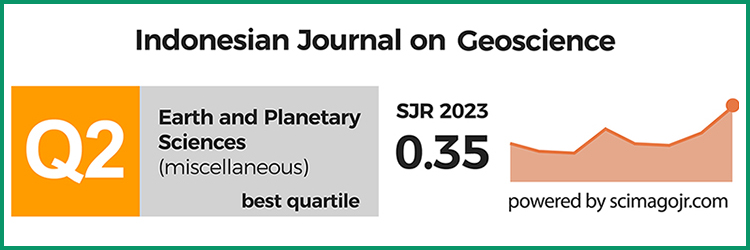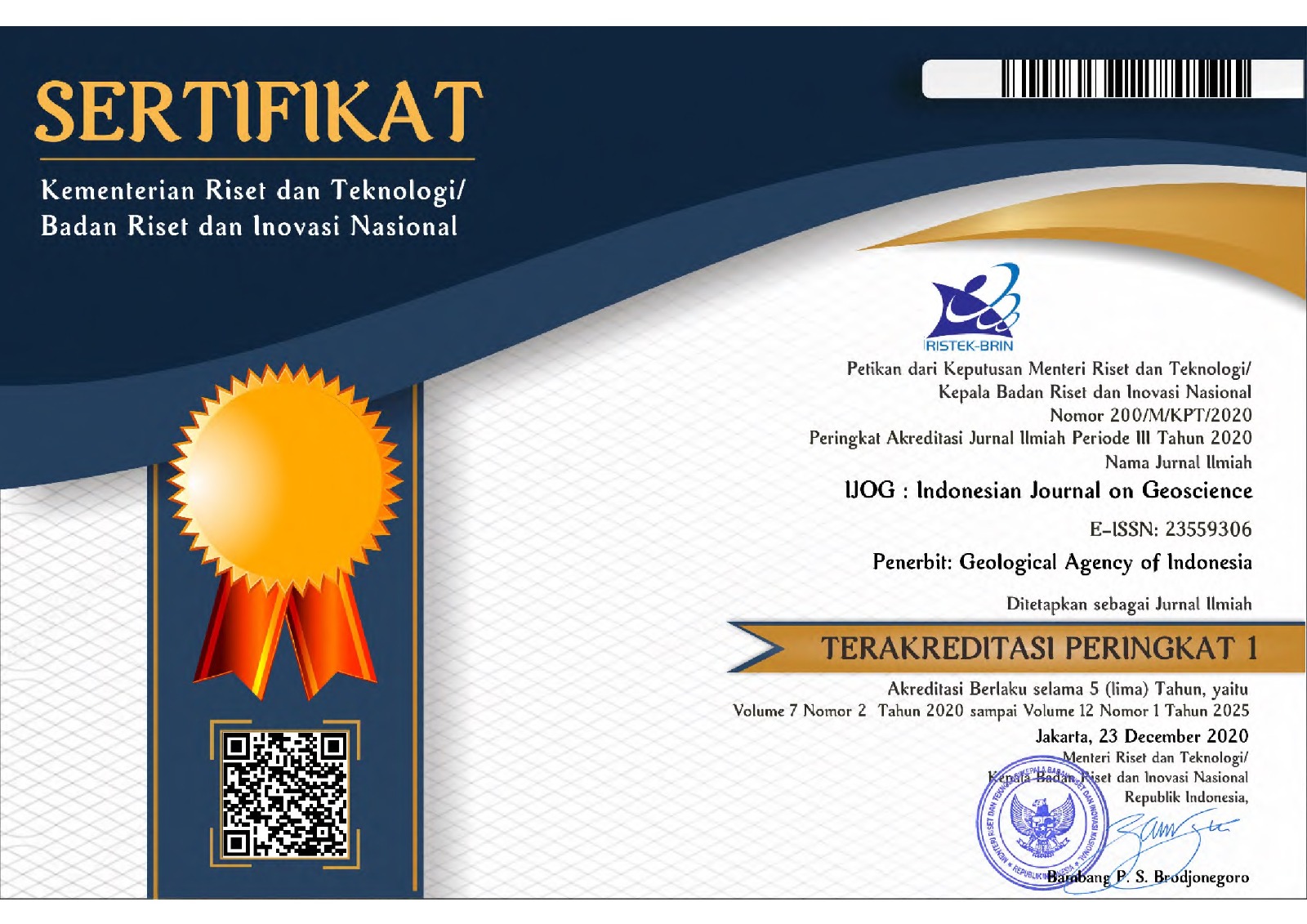GIS and Water Quality Index Based to Assess Spring Water Quality, A Case Study of Bani Kinanah District, Irbid, Northwestern Jordan
DOI:
https://doi.org/10.17014/ijog.10.3.393-405Keywords:
Water Quality Index, Geographic Information System, Springs Water, Bani KinanahAbstract
Springs in northwestern Jordan are significant sources of freshwater for local communities. The reliance on springs to fulfill the growing demands for water has been intensified in the past decade, following the decline in rainwater due to climate change. Thirty water samples were collected from springs located in Bani Kinanah District, northwest Jordan, and tested for various water quality parameters, including pH, EC, TDS, Na+, Ca+2, Mg+2, K+, Cl-, F-, SO4-2, NO3-, TH, TA, Fe, Mn, Pb, and Zn. The results show that most water quality variables fall within the acceptable limits for drinking water set by the World Health Organization (WHO) and the Jordanian standards, except for a few indicators. The chemistry of spring water is mainly governed by rock weathering, with dominant Ca-Mg-HCO3 type of water. The spatial distribution of TDS in spring water shows relatively high levels in springs located in northern and northeastern areas. Based on the water quality index (WQI), twenty-six springs are either of excellent or good water quality, and are suitable for drinking purposes. Whereas four springs (Kharja, Malka, EL Za'agah, and Sa'ed) have poor quality and designated for irrigation and industrial usage. This may be due to its proximity to residential areas, as noted in the field observation. Evaluation of the spring water suitability for irrigation shows that most springs are of excellent to good quality, and only a few springs fall under the category of good to permissible for irrigation.
Keywords: Water Quality Index (WQI), Geographic Information System (GIS), spring water, Bani Kinanah
References
Abbasi, T., and Abbasi, S. A. (2012). Water quality indices. Elsevier.
Abdulla, F. A., and Al-Shareef, A. W. (2009). Roof rainwater harvesting systems for household water supply in Jordan. Desalination, 243(1-3), 195-207.
Agriculture Directorate, Irbid Governorate, 2021.
AL Shwayatt K, Hassan A, Al-Taani A.A., Rozali S, Safari N, Sulaiman N. (2019). Removal of Arsenic Compound in Jordan, Yarmouk and Zarqa Rivers Using Coagulation Techniques. Indian Journal of Public Health Research and Development. 10(3): 624-629.
Al-Harahsheh, S., Al-Taani, A. A., Al-Amoush, H., Shdeifat, A., Al-Mashagbah, A., Al-Raggad, M., and Almasaeid, K. (2020). Assessing the Impact of Zaatari Syrian Refugee Campin Central North Jordan on the Groundwater Quality. Jordan Journal of Earth and Environmental Sciences, 11(4), 260-271.
Al-Kharabsheh, A., and Ta'any, R. (2005). Challenges of water demand management in Jordan. Water International, 30(2), 210-219.
Al-Rawabdeh, A. M., Al-Ansari, N., Al-Taani, A. A., and Knutsson, S. (2013). A GIS-based drastic model for assessing aquifer vulnerability in Amman-Zerqa groundwater basin, Jordan. Engineering, (5), 490-504.
Al-Rawabdeh, A., Al-Ansari, N., Al-Taani, A., Al-Khateeb, F., and Knutsson, S. (2014). Modeling the risk of groundwater contamination using modified DRASTIC and GIS in Amman-Zerqa Basin, Jordan. Open Engineering, 4(3), 264-280.
Al-Taani A.A, Nazzal Y, and Howari F. (2021). Chapter 12 - Groundwater scarcity in the Middle East, Editor(s): Abhijit Mukherjee, Bridget R. Scanlon, Alice Aureli, Simon Langan, Huaming Guo, Andrew A. McKenzie, Global Groundwater, Elsevier, 163-175, ISBN 9780128181720,
Al-Taani, A. A. (2013). Seasonal variations in water quality of Al-Wehda Dam north of Jordan and water suitability for irrigation in summer. Arabian Journal of Geosciences, 6, 1131-1140.
Al-Taani, A. A. (2014). Trend analysis in water quality of Al-Wehda Dam, north of Jordan. Environmental monitoring and assessment, 186, 6223-6239.
Al-Taani, A. A., Batayneh, A., El-Radaideh, N., Al-Momani, I., and Rawabdeh, A. (2012). Monitoring of selenium concentrations in major springs of Yarmouk Basin, North Jordan. World Applied Sciences Journal, 18(5), 704-714.
Al-Taani, A. A., El-Radaideh, N. M., Al Khateeb, W. M., and Al Bsoul, A. (2018b). Reservoir water quality: a case from Jordan. Environmental monitoring and assessment, 190, 1-15.
Al-Taani, A. A., El-Radaideh, N. M., and Al Khateeb, W. M. (2018a). Status of water quality in King Talal Reservoir Dam, Jordan. Water Resources, 45, 603-614.
APHA, (1998). Standerd methods for examination of water and wastewater 18th edition. American Public Health Association, Washington, DC. 45-60.
Batayneh, A. T., and Al-Taani, A. A. (2016). Integrated resistivity and water chemistry for evaluation of groundwater quality of the Gulf of Aqaba coastal area in Saudi Arabia. Geosciences Journal, 20, 403-413.
Batayneh, A., Zaman, H., Zumlot, T., Ghrefat, H., Mogren, S., Nazzal, Y., and Al-Taani, A. (2014). Hydrochemical facies and ionic ratios of the coastal groundwater aquifer of Saudi Gulf of Aqaba: implication for seawater intrusion. Journal of Coastal Research, 30(1), 75-87.
Brown, R. M., McClelland, N. I., Deininger, R. A., and O’Connor, M. F. (1972). A water quality index—crashing the psychological barrier. In Indicators of Environmental Quality: Proceedings of a symposium held during the AAAS meeting in Philadelphia, Pennsylvania, December 26–31, 1971 (pp. 173-182). Springer US.
Brown, R. M., McClelland, N. I., Deininger, R. A., and Tozer, R. G. (1970). A water quality index-do we dare. Water and sewage works, 117(10).
Chadha, D. K. (1999). A proposed new diagram for geochemical classification of natural waters and interpretation of chemical data. Hydrogeology journal, 7, 431-439.
Department of Statistics (DS) (2022). Jordanian Department of Population and Social Statistics.
Eaton A. D. Clesceri L. S. Greenberg A. E. Franson M. A. H. American Public Health Association American Water Works Association and Water Environment Federation, (1998). Standard methods for the examination of water and wastewater (20th ed. 1998). American Public Health Association.
El-Naqa, A., and Al-Shayeb, A. (2009). Groundwater protection and management strategy in Jordan. Water resources management, 23, 2379-2394.
Gibbs, R. J. (1970). Mechanisms controlling world water chemistry. Science, 170(3962), 1088-1090.
Hadadin, N., Qaqish, M., Akawwi, E., and Bdour, A. (2010). Water shortage in Jordan—Sustainable solutions. Desalination, 250(1), 197-202.
Jordanian Standard (JS) (2018). Jordanian drinking water standards, 286/2015.
Mohammad, A. H. (2017). Assessing the groundwater vulnerability in the upper aquifers of Zarqa River Basin, Jordan using DRASTIC, SINTACS and GOD methods. International Journal of Water Resources and Environmental Engineering, 9(2), 44-53.
Mohsen, M. S. (2007). Water strategies and potential of desalination in Jordan. Desalination, 203(1-3), 27-46.
Muhaidat, R., Al-Qudah, K., Al-Taani, A. A., and AlJammal, S. (2019). Assessment of nitrate and nitrite levels in treated wastewater, soil, and vegetable crops at the upper reach of Zarqa River in Jordan. Environmental monitoring and assessment,191, 1-11.
Nortcliff, S., Carr, G., Potter, R. B., and Darmame, K. (2008). Jordan’s water resources: Challenges for the future.Geographical paper, 185, 1-24.
Obeidat, M. M., Awawdeh, M., and Al-Mughaid, H. (2013). Impact of a domestic wastewater treatment plant on groundwater pollution, north Jordan. Revista mexicana de ciencias geológicas, 30(2), 371-384.
Salameh, E. (1996). Water Quality Degradation in Jordan:(impacts on Environment, Economy and Future Generations Resources Base). Friedrich-Ebert-Stiftung.
Salameh, E. (2004). Using environmental isotopes in the study of the recharge-discharge mechanisms of the Yarmouk catchment area in Jordan. Hydrogeology Journal, 12, 451-463.
Štambuk-Giljanović, N. (1999). Water quality evaluation by index in Dalmatia. Water Research, 33(16), 3423-3440.
Tyagi, S., Sharma, B., Singh, P., and Dobhal, R. (2013). Water quality assessment in terms of water quality index. American Journal of water resources, 1(3), 34-38.
World Health Organization, and WHO. (2004). Guidelines for drinking-water quality (Vol. 1). World Health Organization.



















